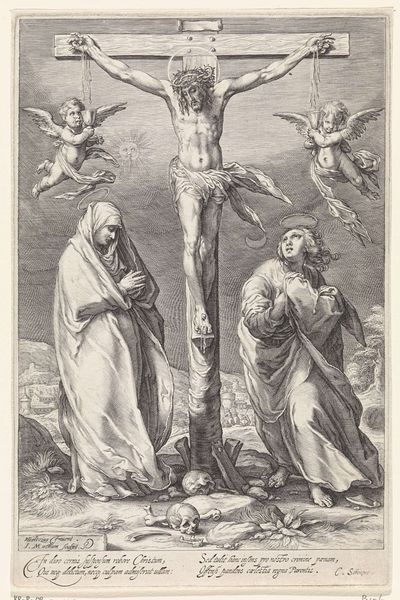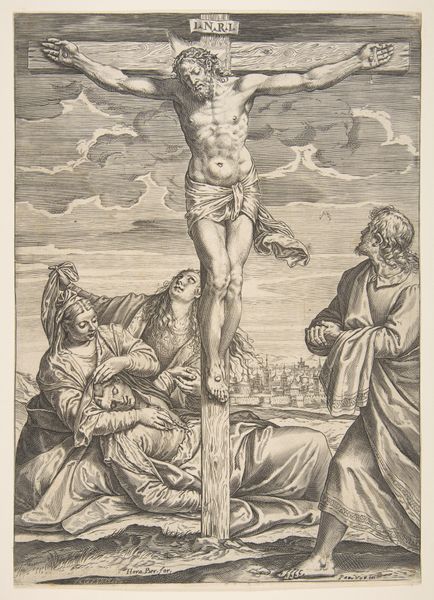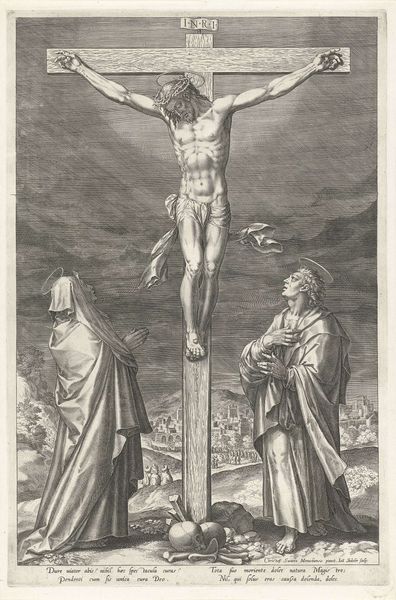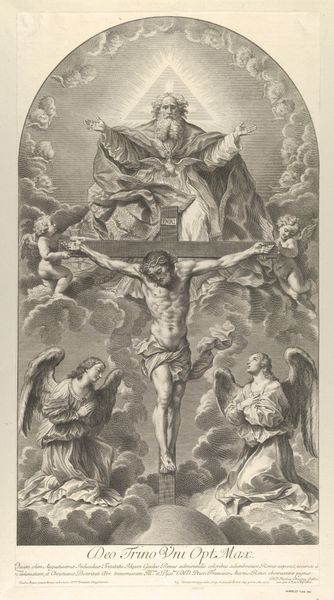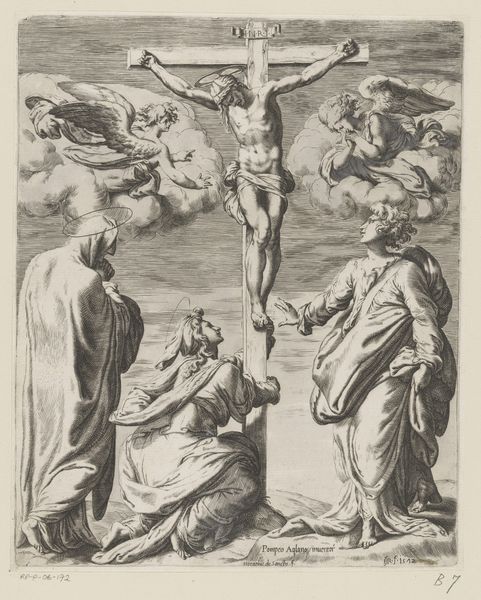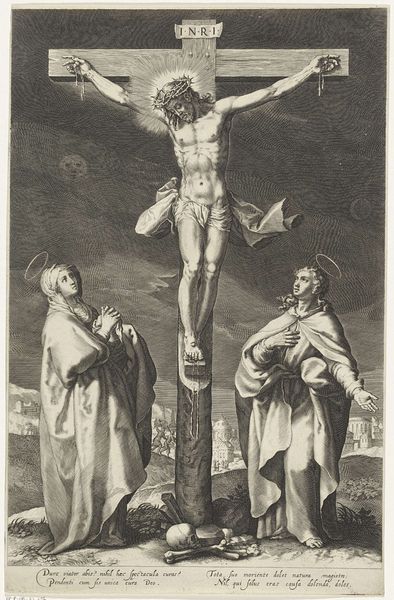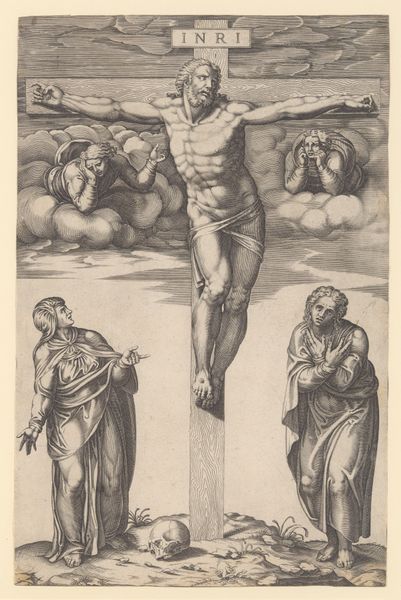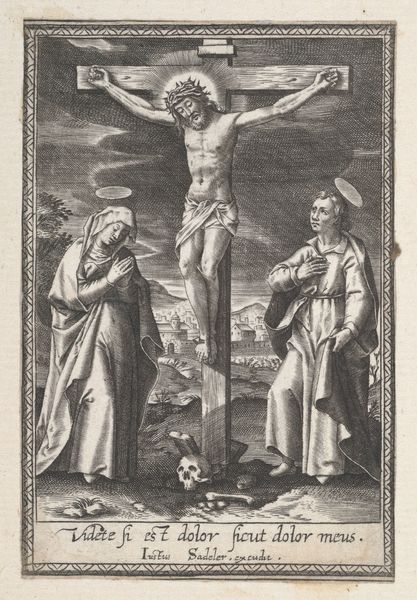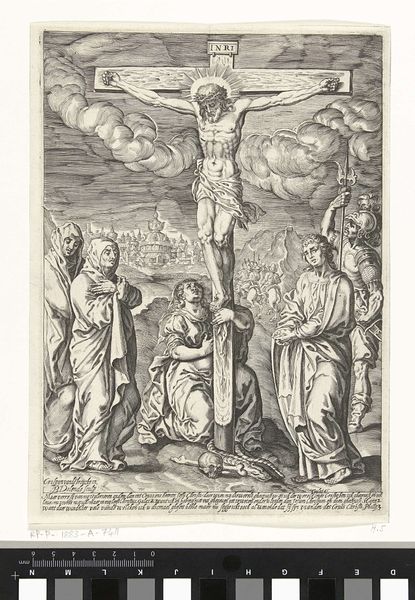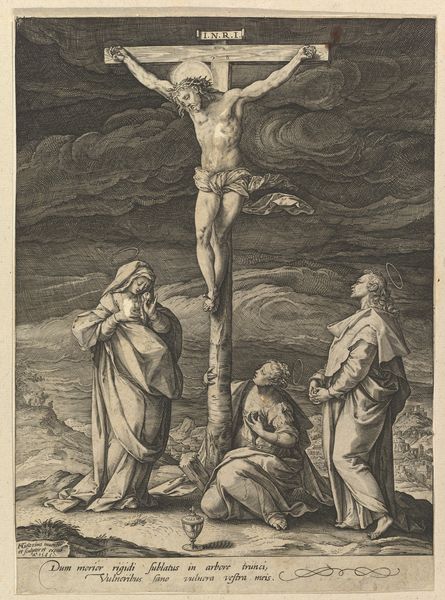
Christus aan het kruis geflankeerd door Maria en Johannes in een landschap 1566 - 1649
0:00
0:00
print, etching
#
portrait
#
allegory
#
baroque
# print
#
etching
#
landscape
#
figuration
#
form
#
chiaroscuro
#
line
#
portrait drawing
#
history-painting
Dimensions: height 526 mm, width 364 mm
Copyright: Rijks Museum: Open Domain
Editor: This print, "Christ on the Cross Flanked by Mary and John in a Landscape," is attributed to Philippe de Soye and was created sometime between 1566 and 1649, using etching. I’m struck by how stark the figures are against the detailed background—there's a strong sense of drama. What stands out to you most? Curator: The entire composition is structured through symbolic layers, echoing the historical context within personal experience. The skull at the base, for instance. How do you perceive that age-old symbol operating within the scene? Editor: Well, it signifies mortality, the death that Christ’s sacrifice overcomes. Curator: Precisely. The city in the background then becomes symbolic not only of a place but the enduring continuity of civilization, forever altered by this central event, this moment. Do you see how the artist uses line and form to underscore emotional content, too? Editor: I do! The swirling clouds draw my eye up to Christ and the angels, while Mary and John seem very grounded by comparison, perhaps embodying the human experience of grief. Curator: Yes! Notice how Mary's gesture connects to gestures mirrored by angels, visually encoding emotional and spiritual states across humanity, divinity, and temporality. And the stark, almost graphic, quality emphasizes the immediacy of sacrifice and mourning across different states of being. The artist prompts us to contemplate sacrifice beyond the narrative, seeing it as an enduring cultural keystone. Editor: This reminds me how symbols evolve across time. I hadn’t fully appreciated how deliberately they were deployed! Curator: Absolutely, artistic visualization acts as both a time capsule and mirror. Therein, art reflects the present through borrowed echoes and anticipating transformations, linking image and identity across the ages.
Comments
No comments
Be the first to comment and join the conversation on the ultimate creative platform.

